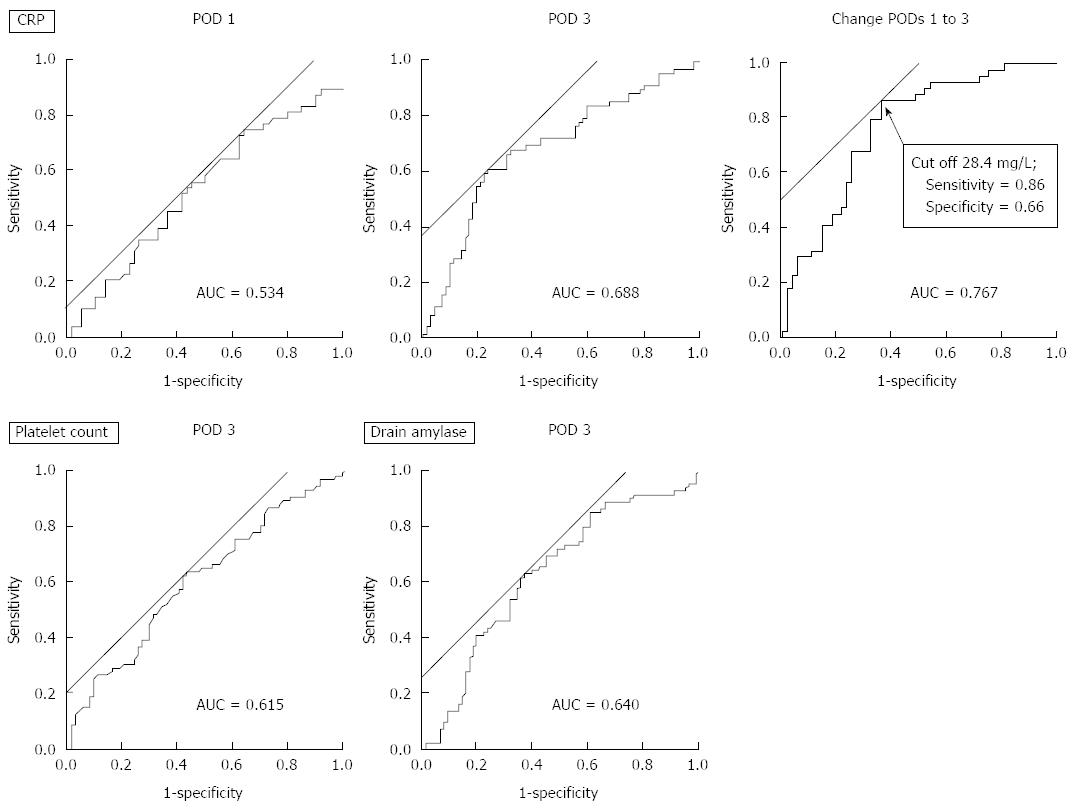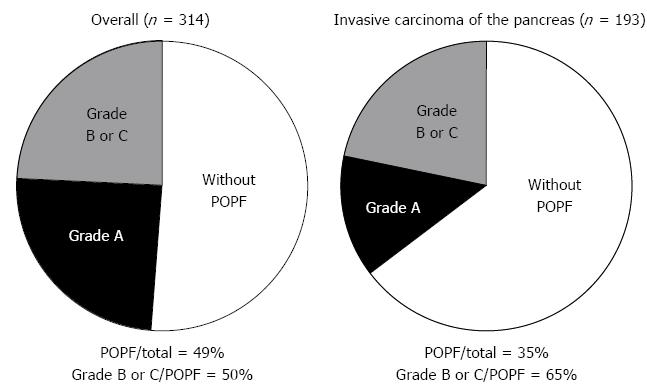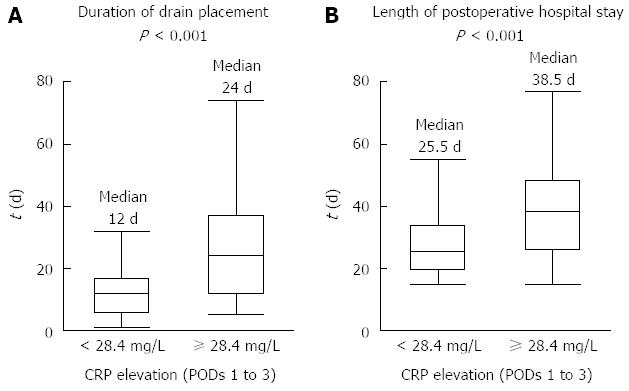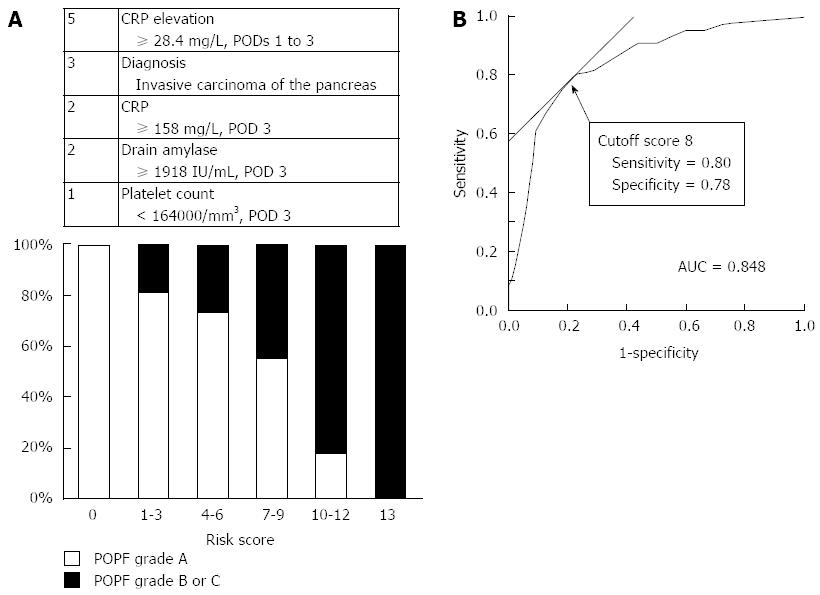Copyright
©2014 Baishideng Publishing Group Inc.
World J Gastroenterol. Jul 14, 2014; 20(26): 8535-8544
Published online Jul 14, 2014. doi: 10.3748/wjg.v20.i26.8535
Published online Jul 14, 2014. doi: 10.3748/wjg.v20.i26.8535
Figure 1 Receiver operating characteristic curves.
Receiver operating characteristic curve for the C-reactive protein (CRP) level, platelet count, and amylase content in drain fluid as diagnostic factors for clinically relevant postoperative pancreatic fistulas. The change in the CRP levels from postoperative day (POD) 1 to POD 3 demonstrated the highest area under the curve (AUC) value.
Figure 2 Distribution of postoperative pancreatic fistulas grade in the entire study population as well as patients with invasive carcinoma of the pancreas.
POPF: Postoperative pancreatic fistulas.
Figure 3 Comparison of duration of drain placement and postoperative hospitalization between two groups categorized by elevation in the C-reactive protein level from postoperative days 1 to 3.
A: The duration of drain placement was significantly longer in patients with high elevation of the C-reactive protein (CRP) level than in those without high elevation of the CRP level (P < 0.001); B: The duration of postoperative hospitalization was significantly longer in patients with high elevation of the CRP level than in patients without high elevation of the CRP level (P < 0.001). POD: Postoperative day.
Figure 4 Risk classification scoring scale for clinically relevant postoperative pancreatic fistulas calculated using five parameters.
A: Parameters with allocated scores and a bar graph of the prevalence of clinically relevant postoperative pancreatic fistulas (POPFs). Prolonged POPFs increased gradually in proportion to the score from 0% to 100%; B: Receiver operating characteristic curve for the risk score as a diagnostic factor of clinically relevant POPFs. A remarkably high goodness of fit was demonstrated. CRP: C-reactive protein; POD: Postoperative day.
- Citation: Kanda M, Fujii T, Takami H, Suenaga M, Inokawa Y, Yamada S, Kobayashi D, Tanaka C, Sugimoto H, Koike M, Nomoto S, Fujiwara M, Kodera Y. Novel diagnostics for aggravating pancreatic fistulas at the acute phase after pancreatectomy. World J Gastroenterol 2014; 20(26): 8535-8544
- URL: https://www.wjgnet.com/1007-9327/full/v20/i26/8535.htm
- DOI: https://dx.doi.org/10.3748/wjg.v20.i26.8535












